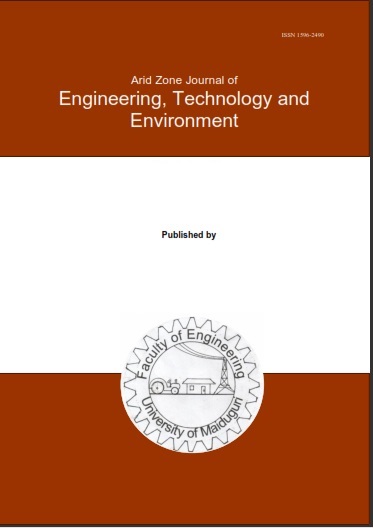Abstract
Tannery wastewater is characterized by its high organic load and toxicity, primarily due to the presence of putrescible matter and heavy metals. This study aimed to simulate a comprehensive treatment process for tannery wastewater using Sewage Treatment Operation Analysis over Time (STOAT) software. The quality of treated wastewater from the simulation was evaluated against the National Environmental Standards and Regulations Enforcement Agency (NESREA) discharge standards to meet environmental safety requirements. The treatment system incorporated a multi-stage approach, including physical preliminary treatment units, chemical primary treatment, and biological secondary treatment. Additionally, the system featured a biogas production section and sludge dewatering units to maximize resource recovery. The simulation effectively modeled the treatment processes, capturing operational dynamics and interactions across the treatment units. Key pollutants, such as biochemical oxygen demand (BOD), total suspended solids (TSS), ammonia, and nitrate were monitored. Additionally, the study explored the impact of hydraulic retention time (HRT) on treatment efficiency. The results indicated that all parameters met NESREA's permissible discharge limits at various residence times. Similarly, the observed trends aligned with findings reported in the literature. Furthermore, the biogas yield from the simulation was 0.27 kg/m³ of tannery influent, with a maximum methane purity of 41%. Digested sludge was generated at a rate of 0.072 m³/m³ of tannery influent. However, extending digester residence time did not significantly enhance biogas yield or methane concentration, suggesting the need for process optimization or pre-treatment strategies. This research demonstrates the effectiveness of STOAT as a simulation tool for designing tannery wastewater treatment processes, ensuring compliance with stringent regulatory standards while optimizing resource recovery through biogas generation and sludge management. The findings emphasize the necessity of integrating physical, chemical, and biological treatment processes to enhance contaminant removal and improve the sustainability of tannery wastewater management.

This work is licensed under a Creative Commons Attribution-NonCommercial-NoDerivatives 4.0 International License.
Copyright (c) 2025 ARID ZONE JOURNAL OF ENGINEERING, TECHNOLOGY AND ENVIRONMENT

